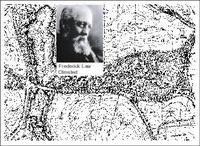 There are sighs aplenty when dealing with local government.
There are sighs aplenty when dealing with local government.Years ago, some friends and I were deeply involved in arts projects in Trenton, NJ, an activity which jaded us a little in matters of public administration. Word reached us, one day, that a certain civil servant had discovered some precious papers. This never got out of the whispering stage and I doubt the locals at large have any inkling of the discovery even now.
This city worker had found a full set of park plans developed for Trenton by Frederick Law Olmsted, America's most famous park designer. The plan actually linked a chain of parks still extant. In a normal world, an alarm would have been raised and funds sought to execute this vision. The project would have generated international interest for years.
But this being Trenton, the plans were quietly returned to their drawer, with only a few friends of the civil servant getting wind of the find.
I remembered that incident in connection with the recent death of Olmsted's great biographer, Charles Capen McLaughlin. I wonder if he discovered Olmsted's Trenton project.
Standing behind McLaughlin is Johns Hopkins University Press majestically shouldering the full responsibility of an academic house:
Johns Hopkins University Press has already published five of nine planned volumes of the documents, with the sixth to come out next year. It also plans three volumes of supplementary material, like photographs and actual plans; the first has already been printed.Aside from the business of the Grant papers and the Jefferson Davis papers, is there a similar effort anywhere in Civil War publishing? Is Olmsted the only other Civil War figure - and a Sanitary Commission member at that - to get "the full treatment"? What a shadow Hopkins is casting on our pathetic little corner of the nonfiction market.
We don't seem to need any more archival material in Civil War history; the story outlines have been set and the OR meets all our needs. Done.
And if Trentonians ever need to see Olmsted's work, they can go to Central Park in New York City to do so.



